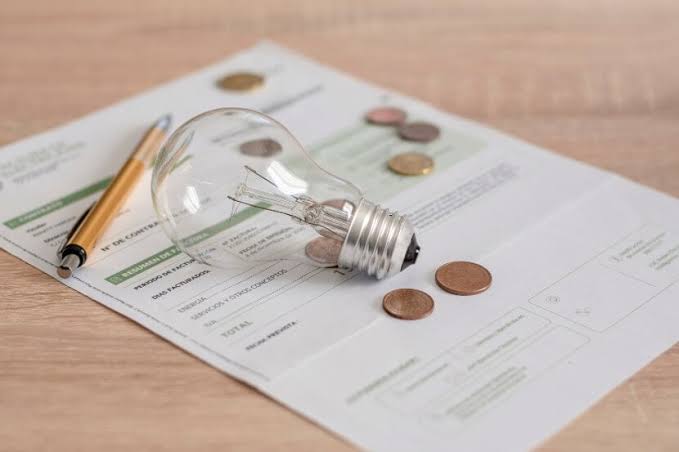Understanding energy plans and their rates is crucial in making an informed decision. Analyzing your historical kWh usage patterns and reviewing the plan details, including the Electricity Facts Label (EFL), is an essential first step. Many bill credit energy plans include a usage threshold of around 2000 kWh. When you exceed the threshold, your average electricity rate jumps significantly. Bill credit plans offer low per kWh rates until your usage hits an arbitrary point. They look good on paper, but they can quickly become expensive.
Pros
Bill credits are pricing on fixed plans that reward you if your electricity usage falls into a specific range during the month. The provider chooses which usage bucket gets credits, which will stay the same for the length of your contract, making it a fixed plan option. These types of plans often have a row showing a meager rate per kWh in the Electricity Facts Label (EFL) advertised on comparison shopping websites and in the providers’ marketing materials. These plans can save you money if your usage is consistently correct in the sweet spot of a billing cycle, but they can also cost you more if your use is higher. The best way to decide if this plan fits your needs is by weighing the pros and cons and considering alternative energy plans. Other options for energy plans include a month-to-month contract that works well for people who move around frequently and want to keep their flexibility, 3- to 6-month programs that help you get in and out of rates quickly, and two- to three-year contracts that give homeowners and renters price security. Some indexed rate plans also provide stability depending on the formula your provider uses, so you can find what works best for you by comparing them to these other options.
Cons
After sweeping energy market changes shook the industry a few years ago, some providers have turned to bill credits as a new point of differentiation. In the past, they’d often offer discounts on their plan rates to draw in customers, but as strict new regulations have come into effect, many have ditched those flashy deals and replaced them with bill credit options. These plans typically have a high price per kilowatt-hour for electricity usage that will only be offset by the bill credit at specific use levels or tiers. These tiers are generally defined when you sign up for the plan and will stay in place for your contract period. This structure makes them a good choice for those with stable usage patterns, but for anyone who uses their power differently from month to month, these plans can cost more than you expect.
Additionally, these plans may have higher upfront costs than other options, and this is only sometimes clearly stated on the electricity facts label (EFL) that must be presented for every plan offered by an energy provider in Texas. This is mainly because these plans usually have energy and utility delivery charges associated with their kWh rates. These costs can be 5 to 10 cents higher than a simple fixed-rate plan, which may add up to a higher upfront cost when compared to other methods.
Choosing a Plan
Before enrolling, it’s essential to understand the pros and cons of bill credit energy plans. The key is to evaluate the plan details, especially the electricity rate per kWh and historical usage patterns. It’s also essential to compare the program with other available options. So, how bill credit energy plans work? Bill credit energy plans typically work by offering customers credits or discounts on their energy bills based on specific criteria, such as signing a fixed-term contract or meeting usage thresholds. While these plans can provide short-term cost savings, they often have drawbacks. One major drawback is that customers may be locked into long-term contracts with penalties for early termination, limiting their flexibility.
Additionally, bill credit plans may have complex terms and conditions that are only sometimes transparent, making it challenging for customers to understand the costs and benefits thoroughly. The typical bill credit energy plan offers a credit on your electricity bill when you reach a certain usage level. These usage levels can either be a fixed dollar amount with no maximum or a range with a minimum and a maximum. When you choose a plan, knowing the credit amount and how much the price per kWh will increase if your usage exceeds the threshold is essential. Some bill credit plans will have a tiered structure that increases the rate at specific usage levels, like 1000 or 2000 kwh. This can make the average electricity rate appear higher than other plans on the Power to Choose website and additional electricity rate comparison websites.
Finally, the length of your contract can impact your energy costs. Month-to-month contracts offer flexibility but may require more effort to shop around when your plan expires. Three- to six-month contracts provide stability but might not be the best choice for people who move or relocate frequently.
Bill Credits
Bill credit plans are promotional strategies used by electricity providers to lure customers. While these plans may offer a lower rate per kWh at certain usage levels, there are better options for your situation. To truly determine if a plan with a bill credit will be effective, compare the electricity rates per kWh at all usage levels and evaluate your historical kWh usage to understand if you can meet the threshold for a specific bill credit level.
For example, let’s say a company offered a bill credit plan that would pay $50 every time you consumed more than 1000 kWh of electricity. If your consumption history reveals that you usually consume between 1000 and 1500 kWh, the plan might work out for you. However, if you typically use between 2000 and 2500 kWh, the program will not be effective, as your rate will jump significantly once you exceed the bill credit threshold. That is why it is so important to carefully analyze a plan’s Electricity Facts Label before making any decisions. It’s also essential to compare the prices of bill credit plans with other options to ensure that you are getting the best deal. This will not only reduce your energy costs but can help you to avoid overpaying.




